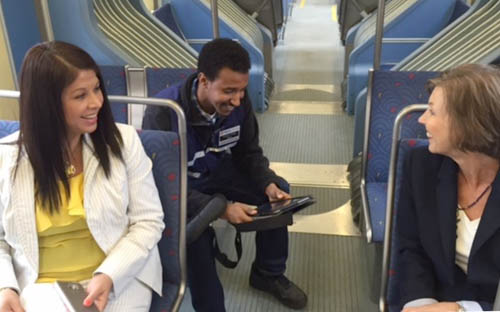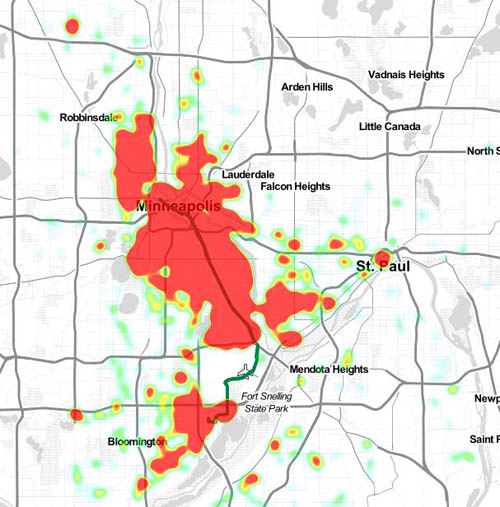Transit planners and policymakers are now armed with a robust set of data about the demographics of who uses transit in the seven-county metro, where they are coming from and going to, and why they are taking their trips, thanks to the 2016 On-Board Transit Survey.
 Survey results will be used to:
Survey results will be used to:
-
Help planners and policymakers better understand travel markets – who the riders are, how and why they are using transit.
-
Improve the regional travel forecast model. The model predicts transit ridership and highway use in the region and helps in the design of highway and transit facilities.
-
Support funding decisions about transportation projects across the region.
Feds praise survey for size of response, quality of data
“Federal Transit Administration officials have referred to it as one of the best surveys of its type,” said Jonathan Ehrlich, planning analyst in the Council’s Metropolitan Transportation Services division. “We’re really proud of the effort.”
The survey is being praised not only for the volume of surveys completed—31,521—but for the quality of the data. A consulting firm trained several dozen surveyors to do interviews with randomly selected riders on Metro Transit rail and bus lines, as well as bus service provided by the University of Minnesota and all suburban transit providers. The in-person surveys conducted by trained interviewers ensured that people understood what they were being asked and that their answers would be more accurate, Ehrlich said.
Riders were asked about:
-
Where they live
-
Where they boarded
-
Where they were going
-
How they accessed the trip (walking, driving, etc.)
-
Purpose of their trip
-
Whether they had access to a vehicle they could have used
-
What fare they paid and by what method
-
Demographics like age, income, race/ethnicity and gender
Improving equity in the regional transit system
One of the early applications of the data is evaluating ridership forecasts made before construction of the Green Line and determining how forecasts can be improved in the future. Another is an applying a finer equity lens to transit service.
“The survey gives us accurate information about the demographics of riders of individual transit lines, and allows us to compare routes using an equity lens,” Ehrlich said. “We’re better able to identify where service could be improved.”
Selected demographics of riders across the system
-
50.3% are between the ages of 18 and 34.
-
56.3% are White; 26.4% are African American.
-
18.1% earn less than $15,000 annually; 16% earn $100,000 or more.
Selected trip data
-
71.6% of riders were going to either work or school.
-
Income trended highest for people going to work or the airport.
-
The vast majority of riders access the transit system by walking.
Using the data from the survey, Metro Transit is currently working to build an interactive data analysis and visualization app for transit planners in the region.
The survey was funded with $800,000 in federal dollars through the Transportation Advisory Board regional solicitation and with $550,000 from Council local sources.
View a PowerPoint presentation about the survey, or watch the 7/10/17 Transportation Committee video to hear Ehrlich’s presentation.
Final report available in mid-October
A final report on the survey will be published on metrocouncil.org by mid-October.